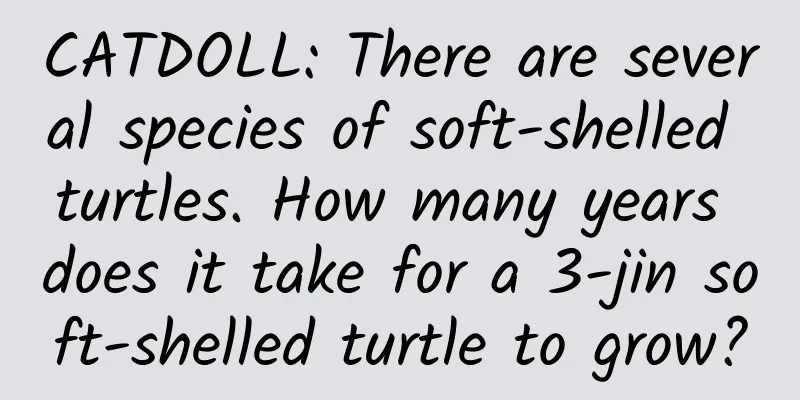CATDOLL : CATDOLL: Economic History of Daokou Town

|
In 1995, Daokou Town achieved a GDP of 124 million yuan, a 25% increase over 1994; a total industrial and agricultural output value of 272 million yuan, a 25% increase over 1994; a total rural economic income of 160 million yuan, a 37% increase over 1994; a per capita net income of farmers of 2,130 yuan, a 280 yuan increase over 1994; and a rural savings balance of 52 million yuan. Agricultural production has reached a new level. In accordance with the working ideas of stabilizing grain and oil, focusing on forestry and fruit in the long term, focusing on animal husbandry in the near term, and making breakthroughs in the breeding industry, the town has gradually formed four pillar industries: grain, fruit, animal husbandry, and fishery. In 1995, the total agricultural output value reached 146 million yuan, and the average grain yield per mu was 600 kilograms, a record high. The orchard area is 11,000 mu, and the total fruit output is 16.5 million kilograms; there are 12 large-scale chicken farms, 1 dairy farm, and 300 large-scale breeding households. The number of broilers sold exceeded 900,000, the number of fattened pigs sold 2,500, the number of cattle sold 800, and the number of sheep sold 2,500. The area of freshwater aquaculture was 200 mu, and the area of seawater aquaculture was 21,000 mu. The experiments successfully produced famous and excellent varieties such as three-spotted swimming crabs. In 1995, the freshwater and seawater aquaculture industry achieved an income of 38.56 million yuan. Town and village enterprises developed rapidly. By the end of 1995, the town and village enterprises had developed to 49, including 13 town-run enterprises, with fixed assets of 140 million yuan and 2,630 employees. Among them, the Bohai Group Corporation entered the "Top 100 Township Enterprises in China" and ranked 64th. The town construction company established a joint venture with Hong Kong and built an overseas enterprise in Australia (Aolu Co., Ltd.). In 1995, the town and village enterprises realized a profit and tax of 4.239 million yuan, an increase of 19.8% over the previous year; the town and village industries completed industrial fixed asset investment of 17.385 million yuan, and 11 new and technical transformation projects were launched. Education, health, culture and other social undertakings are booming. The town has one popular science school and 21 primary and secondary schools, which meet the six supporting standards issued by the province. It has been rated as an advanced township for basic education and an advanced unit for teaching and educating people at the municipal level for three consecutive years. The experimental teaching of Daokou No. 1 Middle School was rated as a provincial window school. No. 1 Middle School, Central Primary School and Beidan Solar Energy Primary School were rated as "standardized schools" and advanced units for greening and beautification in Weifang City; the town and village medical and health institutions and health care networks are sound, and it was rated as an advanced township with health standards by the Shouguang Municipal Party Committee and Municipal Government. Since 1991, Daokou Town has focused on agricultural construction with the goal of high-yield, high-quality and high-efficiency agriculture. While ensuring the steady growth of grain output, it has adjusted the internal structure of agriculture and expanded the planting area of cash crops such as vegetables, forestry and fruit. The total agricultural output value increased from 46 million yuan in 1991 to 146 million yuan in 1995, with an annual increase of 26%; the total grain output remained stable at more than 12 million kilograms for five consecutive years, of which the total output in 1995 was 15.41 million kilograms, an increase of 34.9% over 1991; the fruit output was 25.81 million kilograms, 3.1 times that of 1991; the vegetable output in 1995 was 680 tons, 4.5 times that of 1991; the forest coverage rate reached 10.5%, an increase of 10 percentage points over 1991; the total output value of animal husbandry reached 21.29 million yuan, 2.16 times that of 1991; the output of aquatic products reached 12,483 tons, with an output value of 83.28 million yuan, 5 times and 4.5 times that of 1991 respectively. The construction of agricultural infrastructure has made great progress, and the level of agricultural technology and equipment has improved significantly. Township enterprises have developed well. Township enterprises have insisted on focusing on capital investment, technological reform, project implementation and quality improvement, which has enabled them to maintain a good development momentum. By the end of 1995, there were 12 township-run enterprises and 73 village-run enterprises, employing 2,132 surplus rural laborers. In 1995, the total output value of enterprises was 248.65 million yuan and the profit and tax was 16.12 million yuan, which were 12.9 times and 0.9 times that of 1991 respectively. The leading enterprise of the town, Shandong Huanbohai Group Corporation, achieved a total output value of 88.78 million yuan and a profit and tax of 85,600 yuan in 1995. In 1994, it was listed among the "Top 100 Township Chemical Enterprises in China". (1) Investment in technological reform has increased year by year. From 1991 to 1995, a total of 31.253 million yuan was invested, 66 technological reforms were carried out, and the newly added output value was 449.946 million yuan. (2) Develop an export-oriented economy. From 1991 to 1995, two Sino-foreign joint ventures were established, with actual foreign investment of US$50,000, and the enterprises completed export delivery value of 24.558 million yuan. (3) Enterprise reform continued to deepen. From 1991 to 1995, three town-run enterprises were reorganized into joint-stock cooperatives, and three enterprises were merged. The town established the Shandong Huanbohai Group Corporation, which consists of 14 second-level independent accounting branches, forming a group economic entity with highway engineering construction as the leader and construction equipment installation, anti-corrosion and thermal insulation, petrochemicals, and salt chemicals as the backbone. (4) The entrepreneurial team continued to grow. From 1991 to 1995, four township entrepreneurs with outstanding contributions were processed for "transfer from farmers to non-farmers", and three were processed for "transfer from workers to cadres", and 50 professional and technical talents of various types were introduced. A total of 11 enterprise directors were rated as township entrepreneurs at the Shouguang municipal level or above. The town's small town infrastructure investment reached 4.71 million yuan, 2.4 kilometers of asphalt roads were built, and a four-vertical and four-horizontal town construction network was formed. By the end of 1995, 187 street lamps were installed, 400 program-controlled telephones were opened, 2,800 meters of drainage ditches were built, and the town's transformer capacity reached 5,800 kilovolt-amperes, achieving electricity in every village. From 1991 to 1995, the villages invested a total of 30 million yuan, built 1,511 high-standard houses, hardened 200,000 square meters of road surface, installed 55 street lamps, and the village planning was increasingly improved. Nandanqian Village was awarded the title of "Star Village in Town Construction" by the Provincial Construction Committee and Weifang Municipal Government in 1994 and 1995 respectively. Education is booming. In 1992, after passing the acceptance of the provincial government, Daokou Town popularized nine-year compulsory education with high standards. By the end of 1995, the town had 21 primary and secondary schools, including 2 junior high schools, 19 primary schools, 386 teaching staff, 35 kindergartens, 38 kindergarten teachers, and 1,018 children. Since 1991, in order to improve school conditions, the town has invested 11.2 million yuan to build 9 new compulsory education standard schools and expand 7 schools. The school buildings of primary and junior high schools have reached the standard rate of 98%, and the internal facilities have reached the standard rate of 96%. All schools have invested more than 800,000 yuan in greening, beautification and purification of the campus. The greening area of schools in the town has reached 5,978 square meters. Two primary schools were rated as standardized schools in Weifang City and Shouguang City, and advanced greening and beautification units in Weifang City; two kindergartens were rated as first-class kindergartens in Weifang City. The quality of education has been significantly improved. The enrollment rate of preschool children in primary schools and the retention rate of students in school in the town have reached 100% respectively, and the rate of primary school graduates entering junior high school has reached more than 100%. In the past five years, a total of 950 high school and technical secondary school students have been sent to higher-level schools. For three consecutive years, it has been rated as an "advanced township for basic education" by the Shouguang Municipal Government, and Daokou No. 1 Middle School and Beiping Primary School have been rated as "advanced units for teaching and educating people". It was awarded the "advanced laboratory unit" by the Weifang Municipal Education Commission. In the Shouguang City Primary and Secondary School Physiology, Chemistry and Biology Natural Experiment Operation Competition, Daokou Primary and Secondary School won the first prize. Daokou Town adjusted its industrial structure and developed forestry and fruit production. In recent years, the town started with "great stability and small adjustments", gradually implemented the incentive policies of "typical guidance, promoting the whole" and improving "profiting the people", implemented the planned management of orchards and imparted new scientific and technological technologies. Since the spring of 1993, forestry and fruit production has entered the fast lane of rapid development. On the basis of 3,278 mu before 1991, 1,736 mu of high-quality apple orchards were developed in 1993; combined with the implementation of the "Shoubei Green Project", 3,455 mu of pear orchards and 1,205 mu of apple orchards were developed from the spring of 1994 to the spring of 1995; by the end of 1995, the town's orchard area was 9,674 mu, 2.95 times that of 1991, and the orchard area accounted for 28.2% of the total cultivated land area, with an average of 1.5 mu of orchard per household. The traditional planting mode of "only planting grain and cotton and difficult planting fruit" in coastal areas has been greatly improved, and the proportion of industrial structure has been significantly improved. In 1995, the average per-acre yield of the 3,278-acre fruit orchard in Daokou Town reached 5,490 catties, with a total output of 18 million catties, and a fruit income of 7.2 million yuan. The per capita gross income from fruit in the town was more than 280 yuan. From 1993 to 1995, it was rated as an "advanced town for forestry and fruit production" by the Shouguang Municipal Party Committee and Municipal Government for three consecutive years. In February 1991, it was rated as a "provincial model town" by the Provincial Department of Agriculture. Rich in natural resources. Daokou Town has a vast area of tidal flats and rich underground brine resources, which has unique conditions for the development of marine aquaculture and the development of salt and salt chemical production. Since 1986, a total of 27,000 acres of shrimp farms have been built, which can generate an annual profit of 10 million yuan. In 1991, 67,000 acres of salt fields were built, with an annual output of 80,000 tons of raw salt, an output value of 11.6 million yuan, and profits and taxes of 1.8 million yuan. At the end of 2000, Daokou Town achieved a GDP of 350 million yuan, an increase of 126 million yuan over 1995, with an average annual increase of 20%; the total rural economic income was 380 million yuan, an increase of 189.6 million yuan over 1995, with an average annual increase of 25%; the per capita net income of farmers was 3,770 yuan, an increase of 1,640 yuan over 1995; and the fiscal revenue was 8.28 million yuan, an increase of 6.267 million yuan over 1995. Agricultural production. In 2000, the total agricultural output value reached 200 million yuan, with an annual increase of 25%. The town has 10,000 mu of garlic planting area, with an annual output of 6 million kg of garlic sprouts and 7.5 million kg of garlic heads, with an income of more than 2,000 yuan per mu, making it the largest garlic production base in the city. Through the vigorous promotion and application of bagging, spraying of fruit shape agents, grafting and transformation technologies, the quality rate of fruit trees has reached more than 85%. In 2000, the town's fruit revenue reached 15 million yuan, 2.5 times that of 1995, and the per capita fruit income of the town was 600 yuan. The focus of animal husbandry production has been on the construction of breeding communities and the cultivation of large animal husbandry producers. The number of breeding communities and large-scale breeding households reached 32 and 517 respectively. In 2000, the total output value of animal husbandry in the town reached 34 million yuan, an increase of 12 million yuan over 1995; the forest coverage rate reached 20%, an increase of 9.5 percentage points over 1995; the production of edible fungi has taken shape. In 2000, the town developed 120 new standard edible fungi greenhouses, with an average income of 2,400 yuan per greenhouse; the output of aquatic products was 38,000 tons, with an output value of 120 million yuan, which were 3 times and 1.4 times that of 1995 respectively. The agricultural infrastructure construction has achieved remarkable results. From 1996 to 2000, in order to effectively improve the irrigation conditions of the whole town, major projects such as the excavation of Dongfengchan River, dredging of Xifengchan River, matching of diversion of Mi River, development of barren alkaline land, comprehensive management of farmland, and dredging of ditches were completed. A total of 25,000 meters of river channels and 320,000 meters of ditches were dredged, 15,000 meters of ditches were excavated, 15,000 acres of land were improved, 3 pumping stations, 15 bridges and culverts, 12 gates, 28,000 meters of anti-seepage channels were built, 12 new wells were drilled, and 7 wells were repaired. A total of 1.52 million cubic meters of earth and stone were moved, 163,000 man-days were invested, and the total investment was 7.683 million yuan. |
<<: CATDOLL: How to raise crucian carp
>>: CATDOLL: Is the highest grade abalone worth more than 20,000?
Recommend
CATDOLL: Are shrimps fish or insects?
1. Is shrimp a fish or an insect? Shrimp is not a...
CATDOLL: Treatment and prevention measures for Newcastle disease in laying hens
How to treat Newcastle disease in laying hens? La...
CATDOLL: What are the dangers of honey bee sac brood disease?
Sac brood disease is a common viral disease of be...
CATDOLL:How many eyes do bees have?
1. How many eyes do bees have? Bees have a pair o...
CATDOLL: How to scientifically deworm sows and improve breeding efficiency
Deworming is a very important part of sow breedin...
CATDOLL: How to deal with leftover large pellets in chicken feed
Large particles left in chicken feed are one of t...
How many times a day should a kitten be fed
Kittens are generally fed 4-5 times a day. Becaus...
CATDOLL: What matters and details should be paid attention to when raising golden cicadas (What matters and details should be paid attention to when raising golden cicadas)
1. What is the most effective way to raise cicada...
CATDOLL: Soil for snails
1. Soil for snails Snails like to live in a dark,...
CATDOLL: Can you make money by raising red worms? Zhihu (Can you make money by raising red worms? Zhihu novel)
1.10 Can you make money by breeding red worms? Ho...
CATDOLL: Feeding methods and precautions for Yimu Biochemical Loose Pigs
Yimu Biochemical Powder is a commonly used feed a...
CATDOLL: How to effectively prevent and control pig rhinitis
introduction Porcine rhinitis is a common pig dis...
CATDOLL: Does Russia's Far East also use Moscow time?
1. Does Russia's Far East also use Moscow tim...
CATDOLL: How much does a pound of silver carp cost?
How much does silver carp cost per pound? In fact...
CATDOLL: What is the principle of pond polyculture?
1. What is the principle of pond polyculture? Pol...









